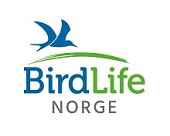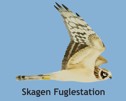
|
|
Pied Flycatcher have been ringed with record numbers this spring. Report from spring 2019
Weather The average temperature has been higher than normal throughout the year, with 1.7 ° C higher than normal from March 1 to June 7, being April 3.3° C above normal. The precipitation has been double in March and lower than normal in April and May. Average precipitation from March until May has been 12% above average. There have been some days with strong winds, preventing the use of nets during 19 days this season compared to 11 days in 2018. Ringing The number of ringed birds has been slightly above average and the number of species has been higher than last year. The "top 5 species" in the nets have been Willow Warbler (192), Robin (106), Chiffchaff (70), Goldcrest (53) and Lesser Redpoll (49). The big thrushes have been ringed in low numbers, especially Blackbird and Fieldfare. Blackbirds are mostly ringed in March and beginning of April, and we think that maybe the big amount of precipitation in March can have affected the ringing results for this species, which has been ringed 53% down average. However, some species of small thrushes such as Robin and Northern Wheatear have been around normal. The Common Redstart has been ringed 160% over average and the Whinchat has been seen in good numbers this year, reaching average levels for the first time since 2006. The Bluethroat has also been seen and ringed in record numbers. Sparrows, finches and tits have been in general low in the ringing, including Great Tit, House and Tree Sparrow, Chaffinch, Greenfinch, Siskin, Rosefinch, Yellowhammer and Reed Bunting. Greenfinch and Yellowhammer show however an increasing tendency. Many warblers have been ringed in normal or high numbers, such as Lesser Whitethroat, Garden Warbler, Chiffchaff and Willow Warbler. Blackcap have been lower than average, while Common Whitethroat have been ringed less than half as last year. Spotted Flycatcher and Pied Flycatcher have been ringed in record numbers. This year we have again monitored the Wheatear breeding in the station area, ringing both adult and young birds with colour-coded rings. The effort has been very good, being a good number of people in the field this year. We suspect it has been a bad year, resulting in 10 nests found in the lighthouse area (Gunnarhaug, Vågsvollvåien, Vågsvollvika). All parents and 16 chicks were colour ringed. Observations From January to June, 184 species have been recorded in the station area (19 less than last year). Although the median date for Brent Geese migrating through Lista is on May 27th and they are normally seen from 26th to 31st of May, this year most of them were seen migrating towards NW on May 23st. This is not only 4 days earlier than expected, but also the second earliest date they have migrated through Lista, being the earliest last year. It seems there is a tendency of advancing the spring migration on this species. There has been a number of species that have been registered in very high numbers, such as, Pintail, Northern Shoveler, Tufted Duck, Red-throated Diver, Yellow-billed Diver, Gannet, European Shag, White-tailed Eagle, Peregrine Falcon, Golden Plover, Kittiwake, Guillemot, Razorbill, showing all these species the highest or second highest spring numbers since 1990. In general, there have been normal or high numbers of seabirds on the move. Apart from the marine species mentioned above, Eurasian Wigeon, Teal, Mallard, Velvet Scoter, Goldeneye, Red-breasted Merganser, Great Northern Diver and Cormorant have been seen above average. However, the number of waders registered in the area has been in general low, including Ringed Plover, Lapwing, Dunlin, Ruff, Common Snipe, Bar-tailed Godwit, Curlew and Redshank. However, some species have been abundant this spring such as Greenshank, Green Sandpiper, Wood Sandpiper, Common Sandpiper and Golden Plover, showing the last one the highest numbers ever. The registered number of Lapwings in the area has been the lowest since 1990 with 855 records in spring. There hasn’t been any Lapwing pair breeding in the area, being this spring the fifth year in a row with 100% of unsuccessful breeding for this species. There have been a low number of unusual species in the area during the spring. We have registered 1 Black Kite, 1 Tawny Pipit, 1 Citrine Wagtail, 1 European Serin and 2 Corn Bunting. The Bird Observatory has continued to guide schools and private visitors in the spring in cooperation with the Lista Wetland Center. Only one school have been guided by the Bird Observatory this year. Anna Moulin (UK), Tohar Tal (Netherlands) and Paulina Camarena (Mexico) have been volunteers at the station and helped Rubén Piculo (the main ringer this spring) and Aïda López, which have been the responsible people for the fieldwork in spring 2018. If you want to check the list of birds ringed during this spring, click HERE. | |||||

| Ringing numbers |
|
Sorry, but we are outside of the spring and autum seasons. Detailed log |
| Reportasje fra Lista FS i Aftenposten |

|
| Seasonal deviation | ||||||||||||||||||||||||||||||
|
|
Følg Følg Lista FS på facebook.com |
| Siste 5 på siden |
|
Festivalgjester presenterer ny fuglebok Lista Fuglefestival 2025 Looking for bird ringers for spring and/or autumn 2025 Begynnerkurs i ringmerking: 26.-27. april 2025 Report from autumn 2024 |
| Nyheter fra NOF |
|
Ny taksonomi på vingene –... Klima- og miljøministeren vil... Har du funnet en måkeunge?... Tvillingartene: Hauk over hauk Hvor mange fuglearter finnes... Statsforvalteren opphever... Storskarv i Europa i... Norge må heve stemmen for... |
Lista Fuglestasjon
Fyrveien 6
NO-4563 Borhaug
post@listafuglestasjon.no Tlf: 949 86 793
 |  |


 Only in English
Only in English



